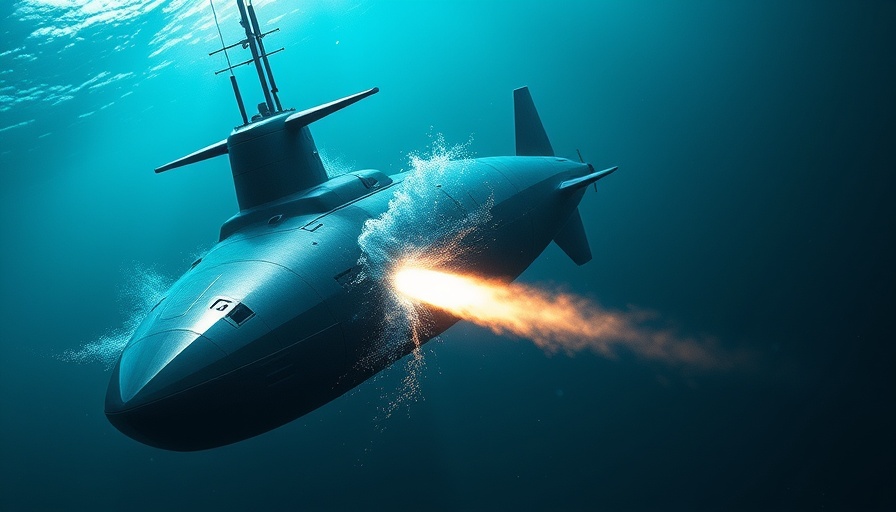
The Future of Warfare: Machine Learning in Submarines
The U.S. Navy is venturing into the new frontier of technological warfare by seeking out artificial intelligence (AI) systems to assist on submarines. This initiative reflects a significant shift from traditional combat methods to more advanced, data-driven strategies. These AI 'combat assistants' are expected to enhance decision-making processes, allowing submariners to address threats more efficiently and accurately. But what does this mean for the future of military operations?
Understanding Machine Learning in Military Applications
Machine learning, a subtype of AI, allows machines to learn from data inputs and improve their performance over time without direct instruction. By utilizing algorithms and statistical models, these systems can identify patterns and provide insights that human operators might miss. In a military context, this capability could revolutionize everything from tactical decision-making to predictive analysis of enemy movements.
Real-world Implications: Enhancing Submarine Operations
In practical terms, machine learning combat assistants can process vast amounts of sonar, radar, and intelligence data almost instantaneously. This rapid analysis can lead to quicker strategic decisions, enhancing response times during critical situations. Such systems could work alongside crew members, offering real-time information that helps submariners adjust their tactics on the fly.
Training and Ethics: Navigating the New Terrain
As technology evolves, so does the need for proper training and ethical considerations. The Navy will face challenges in integrating AI into their systems, ensuring that operators are well-trained in utilizing these new tools effectively. Additionally, ethical concerns regarding the role of AI in combat scenarios, decision-making, and accountability must be addressed. Debates on the moral implications of AI-guided warfare will likely arise, demanding careful consideration as these technologies are adopted.
Potential Benefits of AI Combat Assistants
The integration of AI in submarine operations introduces several advantages:
- Increased Efficiency: AI can process data at speeds and volumes that surpass human capabilities, leading to enhanced situational awareness.
- Improved Safety: Technology can assume hazardous tasks, potentially reducing risk to personnel.
- Cost-Effectiveness: While initial investments in AI systems can be high, long-term operational costs may be reduced due to increased efficiency.
Broader Implications for Global Military Strategy
As the U.S. Navy explores AI combat assistants, other nations are likely to follow suit, which could alter global military dynamics. Countries that invest in similar technologies may gain strategic advantages, reshaping power balances around the world. The focus on machine learning could lead to an arms race in autonomous systems, pushing governments to innovate or risk falling behind.
Conclusion: Embracing Change in Military Technology
The pursuit of machine learning combat assistants marks a pivotal moment for the U.S. Navy and the broader military landscape. As advancements accelerate, it will be crucial for the Navy to navigate the technical, ethical, and strategic challenges presented by this new technology. Embracing change while maintaining a focus on responsible and effective use of AI could usher in a new era of naval operations, where technology and human intelligence work hand in hand.
To learn more about how technology is reshaping military operations, stay informed with our future articles on this exciting topic!
 Add Row
Add Row  Add
Add 




Write A Comment